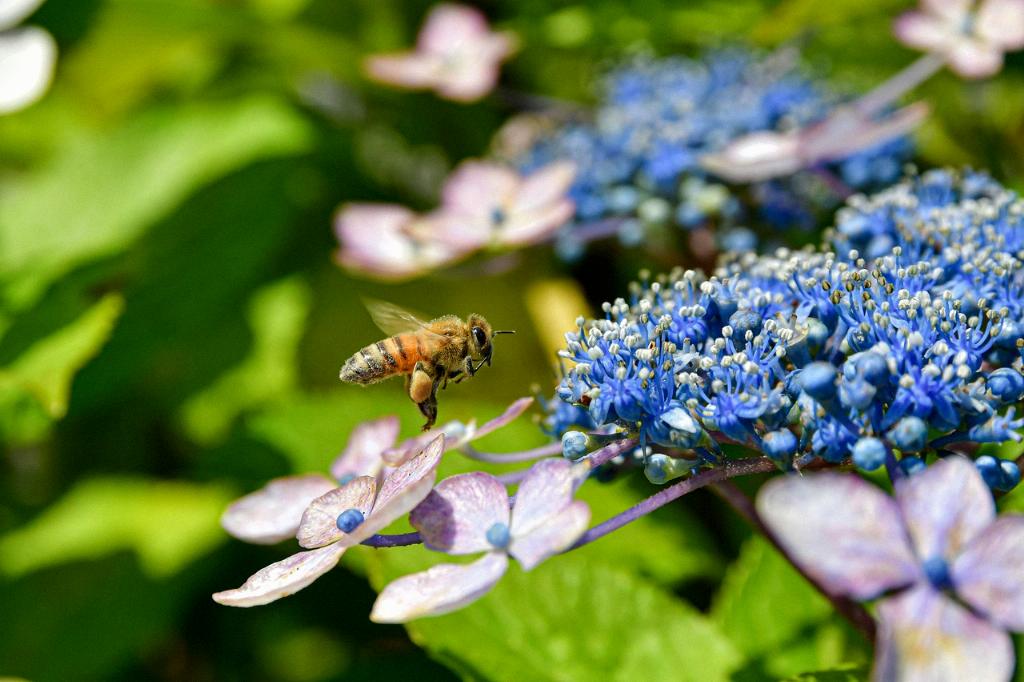Hydrangeas are beloved for their beautiful blooms and vibrant colors, but caring for these bushes requires attention to detail and a few essential tips to ensure they thrive in your garden.
Watering Hydrangea Bushes
Watering is crucial for hydrangeas, as they require consistent moisture to stay healthy. Aim to water your hydrangea bushes at a rate of 1 inch per week throughout the growing season to maintain adequate hydration.
Adding Mulch for Moisture Retention
To help keep the soil moist and cool for your hydrangea bushes, it’s beneficial to add a layer of mulch underneath them. Mulch not only retains moisture but also helps suppress weed growth, giving your hydrangeas a competitive edge.
Applying Fertilizer Based on Varieties
When it comes to fertilizing hydrangea bushes, it’s important to tailor your approach based on the specific varieties you have. Different hydrangeas may have varying nutrient requirements, so be sure to choose the right fertilizer for optimal growth.
Protecting Against Pests and Disease
To safeguard your hydrangea bushes from pests and diseases, select cultivars with resistant traits that can withstand common threats. By choosing disease-resistant varieties, you can minimize the risk of infections and keep your hydrangeas healthy.
Pruning Hydrangea Bushes
Pruning is an essential aspect of caring for hydrangea bushes, as it helps maintain their shape, promote new growth, and remove dead or damaged branches. Be mindful of the specific pruning requirements of your hydrangea variety to ensure proper care.
Choosing the Right Location
When planting hydrangea bushes, selecting the right location is crucial for their overall health and growth. Ensure they receive adequate sunlight, preferably in the morning with some afternoon shade, and provide well-draining soil to prevent waterlogged conditions.
Monitoring Soil pH Levels
Hydrangea color can be influenced by soil pH levels, with acidic soils producing blue flowers and alkaline soils yielding pink blooms. Test your soil’s pH and adjust it accordingly to achieve your desired hydrangea bloom color.
Overwintering Hydrangea Bushes
Preparing your hydrangea bushes for winter is essential to protect them from frost damage and ensure their survival until the next growing season. Mulch around the base of the plants and consider wrapping them in burlap for added insulation.
Deadheading Faded Blooms
Regular deadheading of faded blooms not only improves the appearance of your hydrangea bushes but also redirects energy towards new growth and flowering. Remove spent blooms to encourage continuous blooming throughout the season.
Monitoring Hydrangea Health
Regularly inspect your hydrangea bushes for signs of stress, including wilting leaves, discoloration, or pest infestations. Promptly address any issues that arise to prevent further damage and maintain the overall health of your plants.
Enjoying the Beauty of Hydrangea Blooms
Ultimately, caring for hydrangea bushes is a rewarding experience that allows you to enjoy the beauty of their blooms throughout the growing season. By following these tips and guidelines, you can cultivate healthy, vibrant hydrangeas that enhance your garden’s charm.

